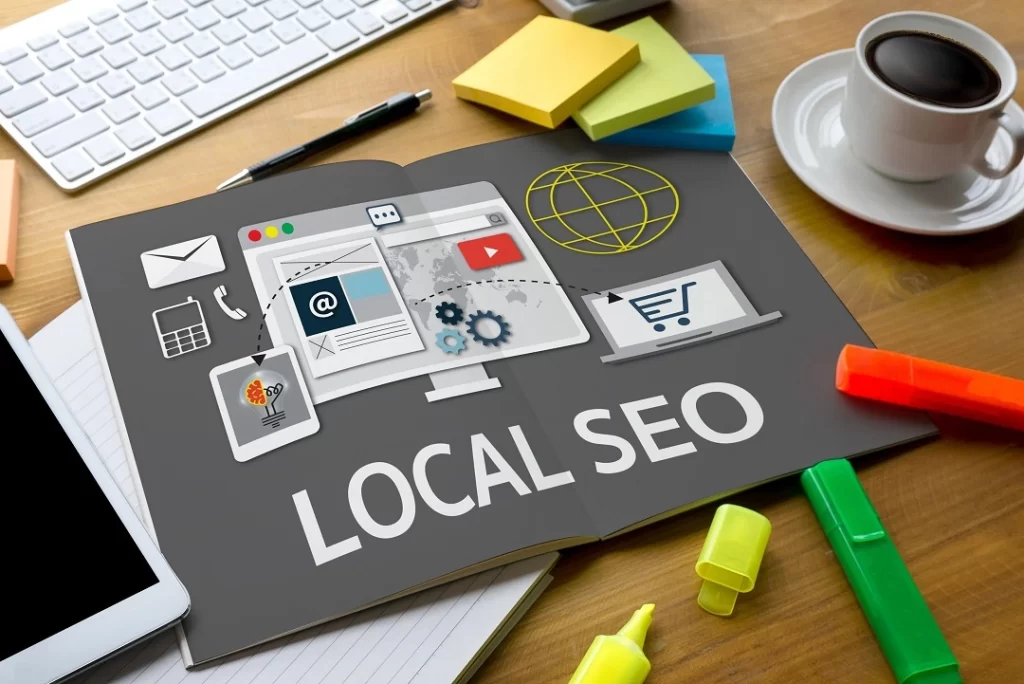If you want your business to dominate search results in your area, your local SEO strategy must be smarter than ever in 2025. Generic SEO tactics are no longer enough. To reach local customers who are ready to act, you need a strategic, localized plan built for conversions, trust, and visibility.
This step-by-step guide outlines a comprehensive, structured approach to developing a high-performing local SEO strategy that resonates with both search engines and customers.
Step 1: Understand How Local SEO Works in 2025
Before diving into execution, it is essential to understand the current state of local SEO. Google’s algorithms now prioritize proximity, relevance, and trust. To effectively identify how your local audience searches for services, start with in-depth keyword research to inform your target terms and content plan.
Three pillars of local SEO dominate rankings:
- Relevance: How well your business matches what someone is searching for.
- Proximity: How close your business is to the searcher.
- Prominence: How well-known and trusted your business is, both online and offline.
Step 2: Claim and Optimize Your Google Business Profile
Your Google Business Profile (GBP) is the foundation of your local presence. Make sure you:
- Claim your profile and verify your ownership.
- Add accurate business name, address, and phone number (NAP).
- Choose the most relevant categories.
- Upload high-quality images of your location, team, and services.
- Enable all booking or messaging features.
- Add detailed descriptions with location-based keywords.
Optimize it regularly. The more complete and active your profile, the better your visibility in the local map pack. For a deep dive into best practices and advanced tips, check out our Google Business Profile Optimization Best Practices post.
Step 3: Audit and Correct All NAP Listings
NAP consistency across the web is a critical local SEO ranking factor. Every time your business is mentioned online, on directories, review sites, or social platforms, your NAP information must be identical.
Run a citation audit to identify inconsistent listings, especially on:
- Yelp
- Bing Places
- Apple Maps
- Yellow Pages
- Chamber of Commerce directories
Use professional tools or manual searches to identify errors and then correct them. Even one mismatch can impact trust and visibility.
Step 4: Build Local Landing Pages for Each Service or Area
If you serve multiple cities or offer various services, you need dedicated local pages. Each page should target a specific service and location keyword.
Make sure each landing page includes the following:
- Locally optimized H1 and meta tags
- Service area-specific content
- Embedded Google Map
- Unique content, never duplicated across cities
- Schema markup for local business
These pages help you rank for “plumber in your city” or “family dentist near your location” searches rather than just general terms.
Step 5: Create Locally Optimized Content That Builds Authority
Content is not just for ranking; it’s for trust-building and answering real user questions. In 2025, Google is rewarding content that demonstrates experience, expertise, authoritativeness, and trustworthiness (E-E-A-T).
Your blog and service pages should include the following:
- FAQs address local concerns.
- Location-specific guides or checklists
- How-to content related to your niche
- Common problems and solutions for local customers
- Internal links to your service pages
Always use natural language, focus on clarity, and sprinkle your location keyword organically without stuffing.
Step 6: Collect and Manage Customer Reviews Actively
Reviews are not just social proof. They are a direct local SEO ranking factor.
Strategies to boost your reviews:
- Ask every satisfied customer for feedback using proven methods from our How to Ask for a Google Review guide.
- Use QR codes in-store to encourage feedback.
- Respond to every review, positive or negative—see how ratings impact rankings in our How Reviews and Ratings Impact Local SEO Rankings post.
- Include keywords naturally in your responses.
- Focus on Google first, then platforms like Yelp or industry-specific review sites.
The more high-quality, authentic reviews you have, the more visibility and trust you earn from search engines and users alike.
Step 7: Earn Local Backlinks from High-Authority Sources
Backlinks remain a powerful ranking signal; however, in local SEO, local links are the most important. Explore effective link-building strategies—from sponsorships to guest posts—that focus on local authority and relevance.
Best practices for local backlink building:
- Sponsor a local event or charity and get a mention.
- Partner with local blogs or news sites.
- Offer expert quotes to journalists on platforms like HARO.
- Write guest posts for local business associations.
- Get listed in city directories and chambers.
Avoid link-building schemes or irrelevant backlinks. Focus on relevance and local authority.
Step 8: Use Structured Data to Boost Search Visibility
Schema markup helps search engines better understand your business, and it’s a core part of technical SEO. Add structured data for your business details, hours, reviews, services, and FAQs to unlock rich result features and boost click-through rates.
Use Google’s Structured Data Markup Helper and validate with the Rich Results Testing Tool to ensure it’s working correctly.
Step 9: Monitor Performance with Local SEO Metrics
Tracking results is essential for refining your strategy and understanding what works. Regular SEO audits combined with analytics for GBP insights, rankings, and traffic ensure you stay on track and identify new opportunities.
Step 10: Stay Updated with Local SEO Changes
Google updates its local algorithm multiple times a year. Staying informed and adapting your strategy keeps you ahead of the curve.
Monitor trends such as:
- Changes in map pack ranking factors
- Google Business Profile feature updates
- Local content preferences (like short-form vs. long-form)
- AI-generated search experiences and how they impact local queries
Join local SEO newsletters, follow industry experts, and test updates regularly on your site.
Final Thoughts
A successful local SEO strategy is never a one-time task. It’s a system. When executed step-by-step with precision and consistency, it becomes one of the most powerful growth levers for local businesses.
From optimizing your listings to building trust with reviews and creating hyper-local content, every step compounds your authority, visibility, and revenue. Whether you’re a new business or an established brand looking for expert support? Partner with the best local SEO company to implement a strategy that works.

